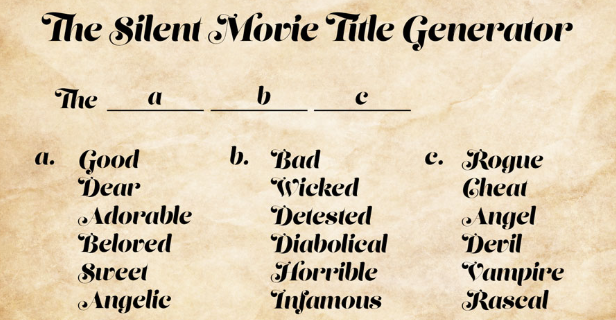If you’re a fan of brain-teasing games, you might have heard of Sudoku New York Times puzzles. This classic game has been around for years and is a fun way to keep your brain sharp. The New York Times offers a daily Sudoku puzzle that challenges players of all levels. Whether you are a beginner or an expert, these puzzles are designed to help you improve your puzzle-solving skills while having fun. Sudoku New York Times puzzles are available in three different difficulty levels—easy, medium, and hard—so you can choose one that matches your skills.
Many people enjoy solving Sudoku puzzles because they’re not just about numbers, but also about logic and strategy. By filling in the numbers and following the basic Sudoku rules, you can enhance your problem-solving abilities. The New York Times puzzles are especially popular because they offer new challenges every day. As you get better, you can try tackling the more difficult puzzles. Plus, they help you improve your focus and concentration, making them a perfect activity for people who love a mental challenge.
Why Sudoku New York Times is Perfect for Puzzle Lovers
If you love puzzles, then Sudoku New York Times is a great choice for you. It’s a fun way to challenge your brain and improve your problem-solving skills. The New York Times provides a variety of Sudoku puzzles each day, so there’s always something new to try. Whether you’re a beginner or an expert, these puzzles offer different difficulty levels, making them suitable for anyone. What makes them perfect for puzzle lovers is the fact that each day presents a fresh challenge. As you get better at solving these puzzles, you’ll feel a sense of accomplishment. Plus, it’s a relaxing way to take a break from your day and keep your mind sharp.
How to Start Solving Sudoku New York Times Puzzles: A Beginner’s Guide
Starting with Sudoku New York Times puzzles is simple, even for beginners. First, find the easiest puzzle on the New York Times website or app. Begin by looking for rows, columns, or boxes with only a few empty spaces. These areas are often where you’ll find the easiest numbers to fill in. As you work, remember that each number 1 through 9 must appear once in every row, column, and 3×3 box. Don’t be afraid to use a pencil or write down possible numbers. Over time, you’ll develop your own strategies. If you ever get stuck, take a short break and return with a fresh mind.The more you exercise, the higher you’ll turn out to be!
The Benefits of Solving Sudoku New York Times Puzzles Every Day
Solving Sudoku New York Times puzzles every day has many benefits for your mind. First, it boosts your logical thinking skills. By figuring out how numbers fit together in rows, columns, and boxes, you’re practicing problem-solving and critical thinking. Regularly playing also helps improve your memory and focus, as you need to remember where numbers go and pay attention to patterns. Another benefit is stress relief. Many people find that solving a Sudoku puzzle helps them relax after a busy day. Since the New York Times offers daily puzzles, you can make it a daily habit that helps keep your brain sharp while offering a sense of achievement with each completed puzzle.
Mastering Sudoku New York Times: Tips and Tricks for Every Level
Mastering Sudoku New York Times puzzles requires practice and strategy. Start by learning the basic rules: each number must appear once in every row, column, and 3×3 box. Once you understand the rules, use techniques like scanning. Scan rows and columns to identify numbers that must go in certain spaces. As you get more comfortable, try solving harder puzzles by looking for patterns and using advanced techniques like “pencil marking” or “naked pairs.” The key is to keep practicing and not get discouraged. Every puzzle solved brings you one step closer to mastering the game. With consistent effort, you’ll be solving puzzles with ease, no matter the difficulty.
How the New York Times Sudoku Puzzle Challenges Your Mind
The New York Times Sudoku puzzle is a great way to challenge your mind. Each day’s puzzle presents a different challenge, and as you progress, the difficulty increases. This gradual increase in difficulty helps your brain adapt and become better at problem-solving. Sudoku encourages you to think ahead and make logical decisions, which improves your mental agility. Since you need to be focused and pay attention to small details, it can also enhance your concentration skills. The more you solve, the sharper your mind becomes, making it a fun and effective mental exercise. Plus, with the variety of puzzles, you’ll never get bored, keeping your brain engaged every day.
Is Sudoku New York Times Good for Kids Discover the Learning Benefits
Sudoku New York Times puzzles are not only fun for adults but also great for kids. Solving puzzles can help children develop important skills like logical thinking, concentration, and patience. Since Sudoku requires kids to focus on numbers and follow rules, it also promotes problem-solving skills. Kids can begin with less difficult puzzles and progressively paintings their way up as their abilities improve.Solving these puzzles also enhances their ability to recognize patterns, which is a crucial skill in both math and science. Plus, Sudoku provides a great way for kids to take a break from screens and engage in a healthy, brain-boosting activity. It’s a fun learning tool that can help kids strengthen their minds while having fun.
Daily Fun with Sudoku New York Times: How to Stay Motivated
One of the best ways to stay motivated with Sudoku New York Times puzzles is to make it a daily habit. The New York Times offers a new puzzle every day, so there’s always something fresh to work on. To keep your motivation high, start with an easy puzzle, and gradually challenge yourself with harder ones. Set a goal to complete the puzzle each day, even if it takes a little longer. You can also track your progress by keeping a puzzle journal.This way, you’ll see how a great deal you’ve advanced over time.Sometimes, it’s helpful to take breaks between puzzles, but the key is to keep coming back every day.The satisfaction of finishing a puzzle will preserve you prompted to resolve more.
Why Sudoku New York Times Puzzles Are More Than Just Entertainment
Sudoku New York Times puzzles are more than just entertainment; they’re also a great way to keep your brain sharp. While many people enjoy them as a fun activity, solving these puzzles can improve your cognitive skills in many ways. They help enhance logical thinking, concentration, and memory. Unlike other forms of entertainment, Sudoku challenges your mind in a meaningful way. It’s not just about filling in numbers; it’s about thinking critically and solving problems. By making it a daily habit, you’ll notice improvements in your mental clarity and focus. It’s a great way to exercise your brain, improve your thinking skills, and have fun at the same time.
What Makes Sudoku New York Times Different from Other Puzzles
What sets Sudoku New York Times puzzles apart from other puzzles is the excellent and form of puzzles supplied. The New York Times has been known for its high standards in puzzle design, making their Sudoku puzzles both challenging and rewarding. They provide more than a few trouble tiers, so whether you’re a newbie or an expert, you could find a puzzle that fits you. In addition, the daily puzzles are updated regularly, keeping things fresh and exciting. Unlike other puzzle books or websites, New York Times Sudoku puzzles have a consistent level of quality that players trust. It’s a reliable source for Sudoku enthusiasts who want to keep their skills sharp and improve over time.
How to Track Your Progress with Sudoku New York Times Puzzles
Tracking your progress with Sudoku New York Times puzzles is a great way to stay motivated and see how much you’ve improved. One easy way is to keep a puzzle journal where you note down the date and difficulty level of each puzzle you complete. You can also track how long it takes you to solve each puzzle and note any strategies you used. Over time, you’ll be aware styles on your solving velocity and accuracy. The more you practice, the better you’ll get at solving puzzles faster and with fewer mistakes. Another way to track progress is by comparing your results from day to day. This helps you see your growth and encourages you to keep challenging yourself with harder puzzles.
Conclusion
In conclusion, Sudoku New York Times is an amazing puzzle game that helps sharpen your mind while keeping you entertained. Whether you’re a beginner or an expert, there is always a puzzle that fits your level. With new puzzles every day, it’s easy to make it a fun daily habit. Plus, solving these puzzles can improve your problem-solving skills, concentration, and memory. The more you practice, the better you’ll get at solving them!
So, if you want a fun way to challenge your brain, try Sudoku New York Times today. It’s a great way to relax, learn, and grow your skills all at the same time. Whether you’re solving a quick puzzle or tackling a more difficult one, every completed puzzle will give you a sense of achievement and joy.
FAQs
Q: How can I start solving Sudoku New York Times puzzles?
A: Start with an easy puzzle and try to fill in the numbers one by one. Don’t rush—take some time and experience the mission!
Q: Is Sudoku New York Times good for kids?
A: Yes, Sudoku is great for kids! It enables them increase logical wondering, concentration, and hassle-fixing skills.
Q: How do I get better at Sudoku New York Times puzzles?
A: Practice regularly, start with easy puzzles, and try different strategies as you progress to harder ones.The extra you play, the better you’ll get!
Q: Can I track my progress with Sudoku New York Times puzzles?
A: Yes, you can! Keep a journal or note down your times and the difficulty levels to see how you improve over time.
Q: Are the Sudoku puzzles on the New York Times tough?
A: The difficulty varies!There are puzzles for all degrees, from clean to very difficult, so everyone can enjoy them.


